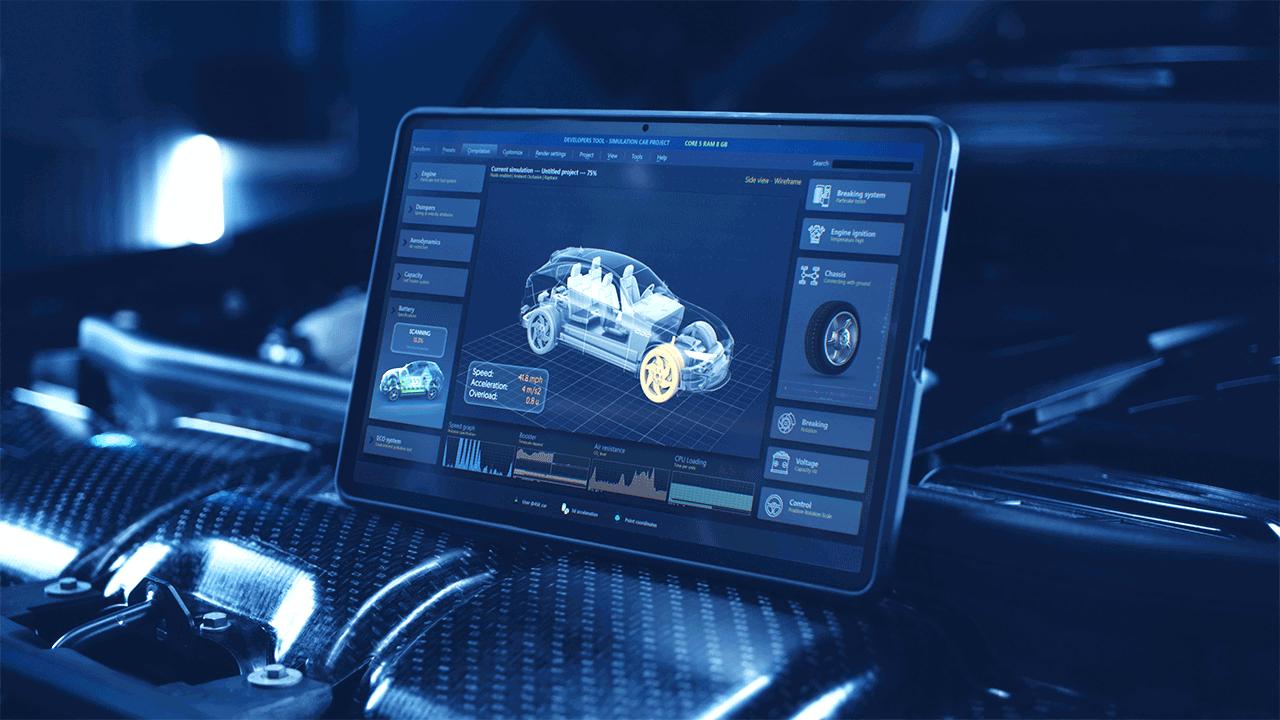Guest Blog: 2021 Predictions for Automotive Product and Systems Development
This blog on 2021 Predictions for Automotive Product and Systems Development was originially published here from Jama Software, and was answered by ...
7 min read
 Don Cooper
:
Aug 30, 2022 4:12:05 PM
Don Cooper
:
Aug 30, 2022 4:12:05 PM

With the growing trend in innovation within the automotive industry and the technology embedded in the products, it is important to understand how far back a product’s life cycle extends. Among other considerations like data analytics, it travels back to the management and implementation of requirements. Having visibility of the entire development of a product and its parts throughout assembly can ensure that they are being developed within the standards and requirements established beforehand. For your company to maintain growth with little disruption in its internal processes, it is worth investing in a tool integration solution that offers valuable bi-directional traceability. LHP Link is a solution unique amongst rivals, one that adds value and continuous growth to an organization.
LHP Link is a bi-directional traceability integration tool that aids companies that desire improved traceability and visibility. Its unique bi-directionality can accelerate companies’ product development process, along with other internal processes. It influences the product life cycle development process by mitigating the risk of not having visibility of what has been implemented and what has changed along the way. Mitigating risks lowers the chance of organizational disruptions, which can lead to bigger external issues for a company’s brand.
A Requirements Traceability Matrix (RTM) is an organizational tool that allows visibility of a product’s requirements during the development of its life cycle and is essential for delivering products that function and behave within their intended standards. What this tool does is provide product developers and engineers with information on defined requirements. If there are areas that need to be improved, or if there are any bugs or defects, an RTM can help prevent any roadblocks and liabilities before they even become detrimental to a project. RTMs are tools vital within industries like medical and automotive, but any company can optimize the value of traceability matrices so that their projects and internal processes can successfully thrive.
Within the process of traceability—which involves accessing and reviewing standards—companies have a few different ways that they can personalize their matrix to fit their overall needs. There are three types of RTMs: forward traceability, backward traceability, and bi-directional traceability. An RTM that offers forward traceability maps the requirements of the product tested. This ensures that all the requirements are progressing toward the overall desired product. An RTM that offers backward traceability maps the product back to the requirements. The purpose of this traceability is to verify that the product tested and developed can link back to the originally established requirements so that the scope of a project doesn’t get changed.
The third type of RTM is bi-directional traceability. In essence, bi-directional traceability can be more advantageous because it is a combination of both forward and backward. This allows traceability from one item to another interchangeably, while identifying the relationship between the two. In addition, bi-directional traceability analyzes the impact of any changed requirements caused by defects and/or bugs in products. LHP Link, again, is an integration tool that offers bi-directionality for requirements traceability.
One thing that traceability enables is organizational growth and success. In order to maintain efficiency within projects and internal processes, traceability is vital for many companies. Without it, there’s the burden of accessing and recording large-scale requirements in RTM tools like Excel, which in turn would increase the need for individuals to meet in person and discuss what each detection in the records may mean; that can be time-consuming. Though there are three types of ways to handle traceability, bi-directional traceability can have more benefits over time.
With the bi-directionality within LHP Link, everything in this integration tool is in real-time; project developers, managers, and engineering teams all have the right requirements readily available anywhere, at any time. In terms of integration software and toolsets overall, everything is in the cloud. Companies should have people on board who understand that and have the capabilities to administer certain tools in the cloud. The alternative would be paying monthly fees to third-party cloud companies, which can become costly really quickly. This is where the value of LHP Link can be added. Implementing this solution into your company’s toolset and processes is one key step in optimizing organizational success and longevity.
The most pivotal aspect of LHP Link is the level of uniqueness it has as a solution, especially compared to others. There are many third-party resources companies could utilize to optimize their traceability, but there are additional costs that come with them. On top of doing the work, you may find your organization buying licenses for the toolsets needed and any extra integrations offered additionally. With LHP Link, there is an in-house native integration; a pair of applications can communicate data from one to the other directly, allowing easy accessibility.
For example, LHP Link offers in-house native integration between both Jira Software and Jama Connect. Jama Connect is an application lifecycle management (ALM) software solution, often used for product requirements, risk, and testing management. Jira is an agile software tool used for project management; these are the two software toolsets embedded in LHP Link. After configuring LHP Link for the specific organization’s implantation, each tool communicates directly with the other. Jama has integrations that hold items full of data that can be recreated exactly in Jira automatically. That is part of the principal usage of our solution: connecting Jira with Jama and allowing for that bi-directional linkage. LHP Link defines work issues (bugs, defects, etc.), dragging them from Jama and dropping them in Jira. If something changes in Jira, it becomes suspect in Jama, allowing product developers and engineers to maneuver from one tool to the other.
There are a few additional unique features that LHP Link offers, adding to its ingenuity. Its preview functionality offers the ability to hover over all of the links, allowing you to view a preview window of specific items. This can be very useful for those managing a project who may not have access to every tool in the toolset but need to see the work products that certain issues are driving. These individuals not only can see descriptions of items, but they can also comment and provide input that gets sent over to the other toolset without needing any access to it.
There are specific functionalities LHP Link has too; you can create a traceability report from Jira, which not many other integrations allow you to do. You can generate metrics—something that is very important when it comes to requirements and test management. It is wise to perform a gap analysis to help identify any bearing work items, along with any orphaned issues without any items linked to them. In addition, a metrics analysis is essential because of the high volume of metrics that go into requirements management.
LHP Link’s capabilities offer an entire extra menu of features, and it has been achieved primarily because LHP built it—we aren’t dependent on third parties. There will always be support necessary with an integration tool like LHP Link to ensure efficient functionality. Any toolset being used will have to be updated for the latest standards and compliances. Since each web browser differs, LHP Link will have to be tested in Firefox, Microsoft Edge, and Chrome to create more range. Making frequent updates and modifications will help make LHP more sophisticated along its lifecycle.
To guarantee continual organizational growth and success, it is key for companies to work smarter rather than harder. Having a bi-directional integration tool that provides traceability in real-time will help avoid unnecessary issues. LHP Link can do things such as:
Proper, real-time traceability can answer questions a company may ask themselves, like:
Something else product developers and engineers can ask themselves is whether they can produce metrics or not. There are some process guidelines—CCMI, Six Sigma, ISO, etc.—that are heavily driven by metrics of some kind; not being able to produce metrics can increase the chance of disruption along the line of product development. One potential disruption a company may face is a product recall. If the development of a product leads to multiple safety violations, then those violations will most likely result in that product being withdrawn or pulled from the consumer market. These scenarios are much more costly than investing in an integration tool like LHP Link, emphasizing why it is so valuable to have.
One way to look at this project—hypothetically—is as a large task with 100 items to complete, and we are currently at step 33. More specifically, this is a project with three phases. The first phase, which is where we are at, starts with Jira and Jama. LHP Link’s bi-directional requirement traceability capabilities are strictly these two toolsets. Phase 2 would involve integration between Jira and other toolsets—such as Helix, IBM Rational Doors Next Generation, etc. Phase 3, finally, would involve integration between any two toolsets. No two toolsets are exactly the same so there will be substantial groundwork needed to develop LHP Link through each remaining phase. There is the slight challenge of understanding how each selected toolset operates, along with understanding and accounting for data schemas, attributes, data types, and link types.
Not many software products are delivered without both known and unknown issues, and continual support will be required. Whether that support comes strictly from LHP or the organization using this solution depends on the situation and how each party would like to handle support. Something else in the pipeline is an “Administration Guide,” which is being constructed in hopes of granting organizations who want to solve their own issues the freedom to upgrade their LHP Link implementation how they want. The goal is to make this solution more user-friendly for organizations interested in investing in it.
Traceability should be considered a vital organizational process because it allows organizations to track every component in a product. In our world especially, it is how we move a product from concepts and designs to a safe-functioning mechanical machine on the road for daily use. Having visible traceability of requirements can detect if there are any types of bugs or defects while developing a product, mitigating any future risks or halts in production. The purpose of requirements traceability is to develop reliable products that abide by the necessary automotive standards and compliances; without it, companies are limiting what they can achieve.
Traceability plays a significant role in the current technology emerging from the automotive industry and will most likely become even more important in the future. Optimizing your traceability process can either give you a competitive edge against rival organizations or leave you far behind the competition. Visibility helps ensure the product you go to market with reflects the standards and requirements established early on. In addition, efficient traceability will provide access in real-time, which can help organizations speed up their product development process overall. The bi-directional traceability features that our solution has provided benefits that not many solutions offer. LHP is a unique requirements traceability solution that adds value—value that can ensure continued organizational success.

This blog on 2021 Predictions for Automotive Product and Systems Development was originially published here from Jama Software, and was answered by ...

Effective Test Cases and How Inputs Influence Decisions This is Part 2 in a series on creating high-quality test scripts. In “Writing High-Quality...

Part 2 of ISO 26262, Management of Functional Safety, is the critical one for your company to initially embrace, even though 12 parts exist within ...